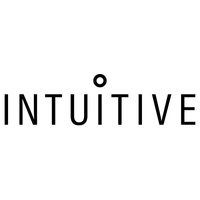
Intuitive Surgical Inc
NASDAQ:ISRG
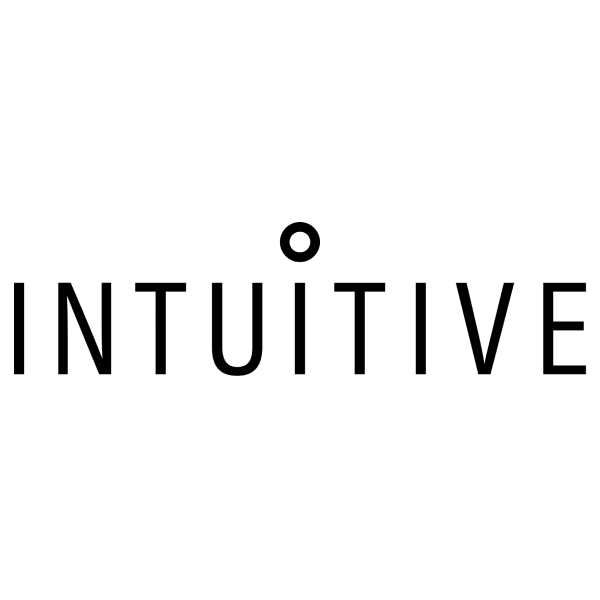
Intuitive Surgical Inc
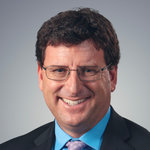

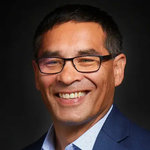


In the rapidly evolving landscape of medical technology, Intuitive Surgical Inc. stands as a pioneer, revolutionizing the way surgeries are performed through its groundbreaking robotic systems. Founded in 1995, the company has set the benchmark for minimally invasive surgery with its flagship product, the da Vinci Surgical System. This sophisticated platform integrates advanced robotics, 3D visualization, and intuitive controls to enable surgeons to perform intricate procedures with precision and control that far surpass conventional methods. By enhancing the dexterity of the human hand and allowing for remarkably steady movements, the system reduces the physical strain on surgeons while improving patient outcomes in terms of reduced recovery time, minimized scarring, and lower risk of infection.
Intuitive Surgical’s business model is both innovative and practical, capitalizing on a combination of product sales, ongoing service agreements, and instrument and accessory sales. Initially, hospitals and medical centers invest significantly in acquiring the da Vinci Systems, providing Intuitive with substantial capital inflows. However, the true genius of the company's revenue model lies in its ecosystem approach; ongoing revenue is generated through the sale of disposable instruments and components needed for each surgery. Additionally, the firm offers extensive maintenance and support services, ensuring that healthcare providers maximize their return on investment while maintaining optimal performance of their surgical systems. This balanced model creates a consistent and reliable income stream, enhancing the company's financial stability and enabling it to invest continually in research and development.
Earnings Calls
The company finished the fourth quarter with $39.5 million in revenue, with a notable $23.7 million in subscription revenue, marking a 23% growth—exceeding our expectations. Annual recurring revenue reached $94.7 million, nearing the anticipated milestone of $100 million. Growth was fueled by new and expanding subscribers, reflected by a robust uptick in customers exceeding $50,000 in ARR and regional growth rates surpassing 20%. Residential real estate, forming 50% of the subscription revenue, saw significant traction. The quarter's gross margin improved remarkably to 53%, and we anticipate further improvements driven by growing subscription revenue. Expenses were cut by 12%, and losses are narrowing, outperforming our full-year guidance by 35%, positioning us for increased revenue and reduced net loss in the coming year.
Management

Dr. Gary S. Guthart is the Chief Executive Officer of Intuitive Surgical Inc., a role he has held since January 2010. He joined the company in 1996, shortly after it was founded, and has played a significant role in its development and success. Dr. Guthart started at Intuitive Surgical as part of the engineering team and later took on various leadership roles, including Vice President of Engineering, Senior Vice President of Product Operations, and Chief Operating Officer. Dr. Guthart earned his Bachelor of Science degree in Engineering from the University of California, Berkeley. He then went on to complete his Master’s and Ph.D. in Engineering Science at the California Institute of Technology (Caltech), with a focus on dynamics and control systems. Before his time at Intuitive Surgical, he worked on technologies related to advanced robotic and ambulatory systems at NASA’s Jet Propulsion Laboratory and at Stanford University Research Institute (SRI). Under Dr. Guthart's leadership, Intuitive Surgical has become the leader in robotic-assisted surgery, known for its da Vinci Surgical System. He has been instrumental in fostering innovation in medical robotics, surgical innovation, and digital platforms, significantly impacting minimally invasive surgery’s landscape. His vision has helped the company grow its product portfolio and expand its global reach, and he is regarded as a pioneering figure in the field of medical robotics.

David J. Rosa is a prominent executive at Intuitive Surgical Inc., a company renowned for its innovative advancements in robotic-assisted surgical systems, particularly the da Vinci Surgical System. Mr. Rosa has played a significant role in enhancing the company's global presence and operational efficiency. Having earned his Bachelor of Science in Engineering from Michigan State University and later an MBA from the University of Michigan, Mr. Rosa's strong educational background has contributed to his ability to lead effectively within the highly technical field of medical devices. Mr. Rosa joined Intuitive Surgical in 1996 and has held various leadership roles throughout his tenure, contributing to the company’s rapid growth and success. In his capacity as an executive, he has been involved in overseeing product development, marketing strategies, and global sales, helping to drive the adoption of robotic-assisted surgical systems around the world. His leadership is marked by a focus on innovation and expanding the clinical and economic benefits of robotic surgery, ensuring that Intuitive Surgical remains at the forefront of the medical technology industry. Through his strategic vision and deep understanding of the healthcare landscape, David J. Rosa continues to influence the field significantly and has become a respected figure within the industry.

Jamie E. Samath is a notable executive in the medical technology industry, currently serving as the Senior Vice President and Chief Financial Officer (CFO) of Intuitive Surgical Inc., a company renowned for its innovative robotic-assisted surgical systems. He joined Intuitive in 2018, bringing with him extensive experience in financial management and strategic planning. Before his tenure at Intuitive Surgical, Samath held significant roles at other major corporations. He worked at the global software leader Verifone, where he served as Senior Vice President of Corporate Finance. With a strong background in finance, he was instrumental in managing financial operations and contributed to strategic decision-making processes. His career began at Ernst & Young, where he acquired valuable skills in auditing and accounting, giving him a solid foundation for his later roles. Jamie E. Samath's expertise extends to financial strategy, operational efficiency, and stakeholder communication, making him a key leader in ensuring the financial health and strategic growth of Intuitive Surgical. His leadership has been pivotal in maintaining the company's position at the forefront of surgical innovation.

Henry L. Charlton is a prominent figure at Intuitive Surgical Inc., where he holds the position of Executive Vice President and Chief Commercial Officer. In this executive role, Charlton is responsible for overseeing the company's global commercial operations. This includes driving the strategic direction for sales, marketing, and service activities, which are critical for the company's growth and success in the field of robotic-assisted surgery. Charlton brings extensive experience in the medical device industry to his role at Intuitive Surgical. Prior to joining the company, he held various leadership positions that helped him build a robust foundation in healthcare technology and commercial strategy. His expertise lies in developing and executing plans that enhance market penetration and foster sustainability and innovation in medical technology solutions. Under Charlton's leadership, Intuitive Surgical continues to expand its footprint in the surgical landscape, with a focus on delivering value to healthcare providers and improving patient outcomes through the use of advanced robotic systems such as the da Vinci Surgical System. His commitment to excellence and innovation is evident in his efforts to cultivate strong partnerships and drive the company's mission forward.

Fredrik Widman serves as the Vice President of Research and Development at Intuitive Surgical, Inc. In his role, Widman is responsible for overseeing the technological advancements and innovation strategies that drive the company's development of cutting-edge surgical robotics solutions. Under his leadership, the R&D team works to enhance and expand the capabilities of Intuitive Surgical's da Vinci Surgical System, aiming to improve its clinical applications and overall efficacy in minimally invasive surgeries. Widman's background in engineering and commitment to innovation play a crucial role in maintaining Intuitive Surgical's position as a leader in the field of robotic-assisted surgery.

Brian King is the Chief Operating Officer (COO) of Intuitive Surgical Inc., a role he has held since 2019. In this capacity, he is responsible for overseeing the company's global operations, including manufacturing, supply chain, quality assurance, regulatory affairs, and corporate real estate. Under his leadership, Intuitive Surgical has been able to enhance operational efficiency and scale its production capabilities to meet the growing demand for its robotic-assisted surgical systems. Before becoming the COO, King had extensive experience within Intuitive Surgical, having joined the company in 2009. Over the years, he has held various leadership positions that contributed to the company's growth and innovation in the field of surgical robotics. His background in engineering and management has been instrumental in his ability to drive process improvements and implement strategic initiatives. Brian King holds a Bachelor of Science in Industrial Engineering and has completed executive education programs to further refine his leadership skills. His strategic vision and operational expertise continue to support Intuitive Surgical's mission to advance minimally invasive care through innovative technology.

Gary H. Loeb, J.D., is an accomplished executive known for his legal and leadership role at Intuitive Surgical, Inc., a company that designs, manufactures, and markets robotic products for minimally invasive surgery. As an integral part of Intuitive Surgical, Loeb holds the position of Executive Vice President and General Counsel. In this role, he is responsible for overseeing the company's legal affairs, including compliance, intellectual property, corporate governance, and regulatory matters. Before joining Intuitive Surgical, Loeb garnered extensive experience in the life sciences and biotechnology sectors. He served as Senior Vice President and General Counsel at Amyris, where he played a crucial role in managing legal affairs and corporate transactions. His background also includes significant tenure at Genentech, a biotechnology company known for its focus on oncology, immunology, and other specialties. During his time at Genentech, Loeb held various legal positions, contributing to the company’s growth and navigating complex legal landscapes. Gary H. Loeb obtained his Juris Doctor (J.D.) degree from Columbia University School of Law and his Bachelor’s degree from Harvard University. His education and diverse experience have equipped him with a comprehensive understanding of the legal and regulatory challenges in the healthcare and biotechnology fields, making him a valuable asset to Intuitive Surgical’s executive team.

Dr. Christopher R. Carlson is the Head of Discovery for the Applied Research Group at Intuitive Surgical Inc., a global leader in robotic-assisted surgical technologies. With a focus on advancing the capabilities of surgical robotics, Dr. Carlson leads initiatives that explore novel technologies and techniques to enhance surgical precision and patient outcomes. He has a robust background in engineering and research, contributing significantly to the development of cutting-edge medical devices. Under his leadership, the research group seeks to innovate and integrate new discoveries into practical solutions for minimally invasive surgery, thereby fostering advancements in the field of surgical robotics.

Patricia "Pat" Wadors is a prominent figure in the field of human resources and corporate leadership, known for her strategic approach to talent management and organizational development. She is the Chief People Officer at Intuitive Surgical Inc., a company that specializes in robotic-assisted surgical systems. In her role, Wadors focuses on enhancing employee experience, fostering an inclusive company culture, and implementing innovative HR practices to support the company's growth and mission. Before joining Intuitive Surgical, Wadors held significant leadership positions in a variety of high-profile companies. She served as the Chief Talent Officer and CHRO at ServiceNow and LinkedIn, where she was instrumental in transforming HR practices and advancing diversity and inclusion initiatives. Her career also includes roles at Plantronics, Yahoo!, and Align Technologies. Wadors is noted for her advocacy of diversity, equity, and inclusion in the workplace, and she frequently speaks on these topics at industry conferences and events. Her leadership style emphasizes empathy, transparency, and the empowerment of employees to drive both individual and organizational success. Her contributions to HR and her influence on corporate culture have earned her recognition as an industry leader, and she continues to shape the ways in which companies approach human capital and employee engagement.
























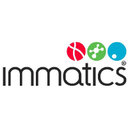




























 You don't have any saved screeners yet
You don't have any saved screeners yet

Good afternoon, and welcome to the Matterport Fiscal 2023 Fourth Quarter Results Conference Call. [Operator Instructions]. Please note this event is being recorded.
I would now like to turn the conference over to Mike Knapp, Vice President of Investor Relations. Please go ahead.
Thanks, and welcome to Matterport's Fourth Quarter and Full Year 2023 Financial Results Conference Call. After the market closed today, Matterport released results for the quarter ended December 31, 2023. The release is available on the company's website at investors.matterport.com. This call is being recorded and webcast live and a link to the webcast can be found on the Investor Relations section of our website.
Before we begin, I'd like to remind you that today's call contains forward-looking statements within the meaning of federal securities laws, including, but not limited to, statements regarding Matterport's future financial results and management's expectations and plans for the business. These forward-looking statements are subject to numerous risks and uncertainties that may cause actual results to differ materially from those discussed on today's call. Additional information regarding the risks and uncertainties can be found in our filings with the SEC.
All forward-looking statements are made as of the date of this call, and Matterport assumes no obligation to update or revise them, except as required by law. In addition, financial references on this call will be on a non-GAAP basis unless otherwise indicated. These measures should be considered as a supplement to and not a substitute for GAAP financial measures. Reconciliation of each of these non-GAAP financial measures to the most directly comparable GAAP measure can be found in today's earnings slides, which are available on the company's website.
Hosting today's call are RJ Pittman, Chairman and Chief Executive Officer; and JD Fay, Chief Financial Officer.
And with that, I'd like to turn it over to RJ to begin.
Thanks, Mike. Good afternoon, everyone, and thank you for joining us today. I'm pleased to report that we closed 2023 with strong fourth quarter results. Total revenue for the quarter was $39.5 million, powered by continued adoption of our solutions from enterprise and small and medium-sized business customers around the globe. Subscription revenue accelerated to 23% year-over-year growth, reaching a record $23.7 million for the period. This was above the high end of our guidance range and demonstrates our platform's growing credibility in boosting productivity and reducing operational costs for customers throughout the industries we serve.
Our key metrics continue to grow at a rapid pace. The space is under management reaching $11.7 million, and our subscriber base expanded to 938,000, reflecting the rapid adoption of our solutions. Subscription revenue growth, gross margin expansion and continued operating expense discipline drove our loss per share to $0.04, a 56% year-on-year improvement. These results highlight our ability to consistently deliver robust subscription growth while driving significant operating improvements as we continue on a fast track path, positive cash flow, key milestone we expect to achieve this year.
Our dedication to maximizing the customer experience is steadily producing increased tension and expansion as organizations gain a deeper understanding of the broader applications of our technology and the impact it delivers. In fact, we saw our net dollar expansion rate improved to 109% from 106% in the prior quarter, the highest level in 2 years. Reflecting back on 2023, our ability to quickly adapt to changing market conditions paid off. We implemented a comprehensive restructuring to align our business more closely with our core competencies and areas of greatest growth potential.
We executed strategies to enhance our company-wide productivity and sales and marketing effectiveness, focusing on investments with the highest ROI for the business. We did this very thoughtfully and expediently, which enabled us to deliver results that bucked several challenging industry trends in 2023. With U.S. home sales down almost 19% and interest rates at decade times, we managed to grow total revenue by 16%. Moreover, we grew residential real estate subscription revenue by 14%. The double-digit growth amidst double-digit industry declines is a strong testament to our value proposition, even in down markets.
What's more, our subscription revenue outside of real estate in verticals like facilities management and construction grew more than 20% in 2023, demonstrating our diversification strategy is working and providing us with powerful momentum heading into 2024. I'm especially encouraged to report that we digitized more than 9 billion square feet of real estate in 2023 to close the year with 38 million square feet under management, a 36% increase led by Pro3 adoption and usage. This rapid growth is not only a clear indicator of the market leadership. It is pivotal to our product strategy.
Our spatial data library, the largest in the industry, unlocks powerful and driven insights like property intelligence and sets Matterport further apart from the field. No other solution in the market today can match Matterport's unique combination of fully automated 3D construction and automated property operational insights from the rich data library that we have created. In 2024, we are accelerating our AI solutions strategy, recognizing the transformative impact to AI, particularly large language models, is having across industries at a rate and scale reminiscence of the early days of the Internet.
The realm of the built world is no exception. The era where the novel virtual tourist vices is behind us. Future demands capabilities comprehend, modify, engage with and re-conceptualize living spaces, workplaces, facilities with the same ease that characterizes the rest of our digital experiences today. This year, we are leveraging our extensive spatial data library and immersive imagery in system with the capabilities of these groundbreaking [indiscernible] technologies. This fusion has revolutionized our interaction with built world, making a significant paradigm shift in how we perceive and engage with our surroundings.
To that end, we took a major lead forward last week with the global launch of Property Intelligence, of AI-powered features and new capabilities for the next-generation intelligent Digital Twin. Part of the 2024 winter release, Property Intelligence gives customers the ability to instantly understand the details of their properties with automated measurements, layouts, editing and reporting capabilities, all generated from a Digital Twin. Matterport has consistently led the field in property marketing, setting the standard with dimensionally accurate 3D virtual tours.
Our introduction of property intelligence propels us further ahead, introducing a new suite of automated features to elevate every property listing while saving our customers valuable time and effort. At the core of Property Intelligence is our unique spatial data library, encompassing 38 billion square feet of the physical world. Our recent advancements have created significant opportunity to increase both subscription revenue and market share across the diverse industries we serve. Globally, we served 1 billion virtual stores each year to millions of visitors initiating them to walk through their dream home, manage retail store, inspect a construction project or operate their facilities remotely.
Our advancements in automation and property instant streamline processes and enhance decision-making speed and quality for all Digital Twin applications. Later this year, we will further enhance the build win with generative AI features to unlock the full potential of the property or physical space. Building on the focus of automation, the next release will introduce the ability to reimagine what states could become. Details will be shared in a future update, but it's clear that property intelligence and our AI strategy can significantly alter our business trajectory and fuel our long-term growth.
As part of our winter 2024 release, we are pleased to announce the introduction of showcase plug-ins, which simplify navigation for virtual visitors and facilitate connections with experts. The Compass and Mini Map plug-ins assist in navigating large spaces, homes, job sites, hotels and more. While the business card on quickly plug-ins, offer essential contact information and additional details about the property. These features allow real estate agents to personalize virtual tours and enable property or facilities management to enrich spaces with contextual content both operations manuals, restaurant menus, reservation pages and more, ensuring a comprehensive to interact with virtual experience.
In an era where real estate agents navigate challenges such as housing affordability, inventory shortages and the rapid pace of technological advancements, the pressure to adapt is immense. Amidst growing over commission structures, agents are under increased pressure to meet the high expectations of their clients and secure new listings. Our Digital Twins serve as comprehensive marketing tools, offering agents a competitive edge to attract more qualified buyers, expedite transactions and increased rental bookings.
With enhancements in property intelligence, including automatic generation of property reports that detailed room dimensions and ceiling heights, along with new branding opportunities for agents, Matterport stands as an essential tool for buying, selling and renting properties more effectively. The travel and hospitality sector remains a significant source of revenue for us, offering substantial growth opportunities. According to IDC, by 2025, an estimated 50% of traffic on hospitality organizations are expected to implement Digital Twins to enhance efficiency and bookings.
Global hospitality market valued at $4.7 trillion by Statista traditionally dependent on direct interactions for sales, property assessments and improvement initiatives. However, the industry is experiencing a fundamental shift towards digital engagement with immersive technologies playing a pivotal role in marketing efforts. Matterport is at the front of this transformation, providing the necessary solutions for customers to capitalize on these digital advancements. Our hospitality clients are increasingly acknowledge the benefits we offer.
In the fourth quarter, we entered into a new multiyear collaboration with Vacasa, utilizing Matterport Digital Twin platform and capture services. The Vacasa is set to enhance the use of our platform, integrating it thoroughly into its property onboarding and guest services for the numerous properties under its management. Our comprehensive Digital Twin solutions will allow the Vacasa to capture, document and market its listings more efficiently and specifically. Each digital twin will provide a deep virtual tour and high-resolution photos, ending a uniform showcase experience across Vacasa's portfolio with just a single capture session.
We've also entered into a partnership with Visiting Media, a leading provider of immersive sales enablement and channel distribution solutions for the hospitality industry. Visiting Media, which supports millions of users worldwide and works with top hospitality brands such as Hilton, Hyatt and IHG Hotels and Resorts has chosen to expand its utilization of Matterport property marketing solutions, making our 3D technology, the preferred option for the thousands of hotels it serves. With Digital Twins for over 17,000 spaces, Visiting Media enables hospitality revenue teams significantly streamline workflows across their properties, aiding property management teams and improving channel distribution efforts.
Our presence in the construction industry is rapidly expanding as we further enhance our suite of solutions and partnerships. Recently, we launched the Matterport Cab File add-on, enabling the conversion of Matterport Digital Twin point clouds into editable CAD drawings in various formats. Given the widespread use of CAD software across the industry, Matterport simplifies as build documentation processes and accelerates project time lines. The Pro3 has gained significant popularity within the architecture, engineering and construction industry due to its exceptional value for performance in capturing superior imagery and high-fidelity Digital Twin reconstructions.
Our commitment to innovation for our flagship device remains strong. In the fourth quarter, we initiated a beta program for high-density scanning, a software-enabled capture upgrade to increase the precision of our 3D models and simplify professional as-built modeling with Matterport. In 2023, we successfully expanded our portfolio of Fortune 1000 clients, welcoming notable new logos, such as John Deere, Siemens and Danone. We also showcased a collaboration with Bayer, a global leader in pharmaceuticals and biotechnology.
Bayer's Crop Sciences division has leveraged Matterport for the design and management of construction projects in tiny and South Africa, transitioning from traditional design processes to digital collaboration. This shift enabled the team to cut project planning expenses by 75% and enhanced efficiency across the value chain from design to construction. We recently formed a strategic partnership with Belden, a premier global provider of network infrastructure and digitization solutions aimed at offering 3D Digital Twin powered connectivity solutions or facilities management in sectors such as industrial automation, smart buildings and broadband.
McKinsey reports that 70% of C-suite technology leaders in large corporations are currently evaluating and investing in Digital Twins. The synergy between Belden's network solutions and our Digital Twin platform will empower businesses worldwide to enhance their connected worker initiatives, allowing for more efficient management of physical spaces in terms of asset performance, production monitoring and sustainable manufacturing.
Through this collaboration, Matterport will integrate into Belden's edge to cloud solutions, bringing our advanced visualization, facial data and developer tools to buildings comprehensive services for secured data handling and management. As members of the Amazon Web Services partner network, Matterport and Belden will also collaborate closely with this leading cloud service provider to develop innovative solutions that assist customers in their operational transformation journeys. Before handing over to JD Fay, I'd like to spotlight our latest environmental, social and governance report.
Embedded within our core business strategy, our ESG framework reflects our commitment to aiding customers and achieving their sustainability objectives, influencing our everyday decisions. The report underscores the efficiency of Matterport technology as a sustainable alternative to travel, facilitating virtual interaction and operations in environments like construction sites, manufacturing plants or during home tourists. According to 2022 data, Matterport technology has helped to prevent over 756,000 tons of carbon emissions since initiating this tracking in 2021.
Enhancing support for our clients, we've collaborated with a third-party carbon accounting firm to create an emissions calculator for enterprise customers. This tool offers a tailored analysis of the environmental and economic benefits derived from using the Matterport Digital Twin platform seem to be accessible to all our enterprise clients. Our platform plays a pivotal role in enabling customers to conduct their operations more sustainably, efficiently and remotely from anywhere in the world.
I would now like to turn it over to JD Fay to discuss our financial performance for the fourth quarter and our outlook for Q1 and full year 2024.
Thank you, RJ. For the fourth quarter, we delivered total revenue of $39.5 million, in line with our guidance range. Subscription revenue rose to $23.7 million, accelerating for the second consecutive quarter to 23% growth and above the high end of our guidance range. Subscription revenue now represents 60% of total revenue, up from 47% just 1 year ago. This is by design as we increase subscription revenue growth and make it a larger percentage of total revenue. Our annual recurring revenue was $94.7 million, and we are rapidly approaching the $100 million ARR milestone that we expect to reach this year.
The strength was broad-based and came from growth in new subscribers, expansion of existing subscribers and price increases we implemented in the middle of 2023. We saw greater than 20% growth in both enterprise and SMB subscription plans and are pleased to share that we now have more than 120 customers with over $50,000 in ARR, up over 30% from the year-ago period. We also saw a 20% year-on-year growth in the Americas and Asia Pacific regions and over 30% growth in Europe, the Middle East and Africa. Our total subscriber base grew to 34% from the year ago period. Paid subscribers grew by 13% and free subscribers grew by 36% compared to the year ago period.
Our net dollar expansion rate improved again in the fourth quarter to 109%. We saw improvements across SMB and enterprise cohorts, supplementing paid subscriber growth and resulting in the highest average revenue per account we have seen since 2020. We also continued to benefit from higher prices for SMB subscription plans. We were pleased to deliver strong and balanced growth in residential real estate and nonresidential real estate vertical markets with both up over 20% year-over-year, and we continue to see significant strength across travel and hospitality, facilities management and construction markets.
We are delivering outsized growth in residential real estate compared to the market as savvy agents leverage our solutions to win more listings, reduce their marketing expenses and enhance their digital content and reach to drive faster sales. Residential real estate represented approximately 50% of subscription revenue in Q4. Services revenue for the fourth quarter was $8.3 million, flat from the year ago period and largely in line with our expectations. Product revenue was $7.5 million in the fourth quarter. Our Black Friday and Cyber Monday promotions drove unit sales, and we elected to extend those promotions through the end of the year. The result was a net positive, while average selling prices declined slightly, we were able to exceed our shipment volume goals for the quarter.
Compared to the year ago period, our Q4 2022 product revenue was particularly high as it was our first full quarter for Pro3 camera sales, and we exceeded our target for Pro2 camera sales in that quarter as supply chain constraints were resolved at that time. Total gross margin for the fourth quarter improved to 53% compared to 36% in the year ago period. We have made excellent progress with gross margin, including a 300 basis point improvement in subscription gross margin, primarily due to price increases and lower cloud hosting costs, a significant improvement in services gross margin and the recovery in product gross margin as product costs have stabilized.
We expect gross margin to continue to trend higher, primarily driven by revenue mix shifts as subscription revenue continues to grow as a percentage of total revenue. Our operating expenses were $38.2 million in Q4, a 12% reduction from the year ago period. Research and development expense was $7.9 million, a reduction of 24% from the year ago period and SG&A expenses were $30.4 million, a reduction of 9%. We have made great strides in streamlining operations and organizing ourselves to be more efficient. We expect to continue improving our operating leverage as we close in on positive cash flow from operations later this year.
Strong subscription revenue, improving net dollar expansion rates, increased average revenue per account and higher gross margin combined with lower operating expenses, yielded a 56% improvement in non-GAAP loss per share, which was $0.04 for the quarter. Our weighted average share count was 308 million shares. Moving on to the balance sheet. We ended the quarter with $423 million in cash and investments, down less than 2% from the prior quarter. We remain debt free. Our cash used in operations improved to $10.4 million in the quarter, which is a 46% improvement from the year ago period and our best cash flow performance since becoming a public company.
For the full year 2023, we delivered record total revenue of $157.7 million. This was up 16% from the prior year, driven by 38% growth in services revenue and 18% growth in subscription revenue. Full year non-GAAP gross margin was 52%, an expansion of 700 basis points, and our non-GAAP loss per share was $0.22, a 46% improvement from the prior year. This loss per share was also 35% better than the full year guidance we provided at the beginning of 2023, which demonstrates our commitment to achieving profitability in the near term and highlights the success we are seeing with a more efficient, focused team of dedicated matter for engineers and professionals.
Turning to guidance in light of our Q4 annual recurring revenue, improving trends in gross margin and disciplined operating expense management, the company is in a strong position to deliver another year of revenue growth and an improvement in net loss as we close in on profitability. To ensure we reach our goal of cash flow profitability by the end of this year, we are controlling our spending while continuing to drive higher subscription revenue growth rate. Our expectations for continued growth in subscription revenue from adoption across new and existing small and medium-sized businesses and enterprise customers further enhances the predictability and profitability of our business.
For the first quarter of 2024, we expect total revenue to be in the range of $39 million to $41 million and subscription revenue to be in the range of $24 million to $24.2 million. This represents 22% year-on-year growth at the midpoint of the subscription revenue range. We expect the balance of revenue to be split roughly evenly between the services and product revenue lines. We anticipate first quarter non-GAAP loss per share to be in the range of $0.02 to $0.04, which would represent a 57% improvement from the year ago period and shows that we continue down the path to reach our profitability targets this year.
For full year 2024 guidance, we expect total revenue to be in the range of $173 million to $183 million. Full year 2024 subscription revenue is expected to be in the range of $104 million to $106 million. This would represent over 20% growth at the midpoint. Our confidence in the full year comes from the improving trends in subscription revenue that I discussed earlier, along with expectations for adoption of our recently announced suite of AI-powered features and new capabilities for the next generation of intelligent Digital Twins.
For the full year of 2024, we expect a $0.07 to $0.11 non-GAAP loss per share. This would be an improvement of $0.13 at the midpoint compared to 2023 or 59% improvement. Over the past year, our team has done an excellent job to accelerate subscription revenue growth. The mix shift to increased subscription revenue creates a more durable recurring revenue business model with higher gross margins and greater fall-through to our operating margins. These mix benefits were evident in 2023 as subscription revenue grew from 52% in Q1 to 60% by Q4.
We expect growing average revenue per account and the improved net dollar expansion rate to continue and to solidify our foundation for a strong 2024. And when combined with disciplined operating expense management, we are positioned to achieve positive cash flow from operations later this year. Further, while this is an important milestone for Matterport, it is also just one step on our path to unlocking the significant operating leverage inherent in our software platform that can deliver even stronger earnings and sustainable cash flows for the years ahead.
Now I would like to turn the call back over to RJ.
Thanks, JD. 2023 marked a pivotal year of transformation for Matterport as we streamlined our operations to become a more agile, efficient and customer-focused organization. This strategic realignment is the cornerstone of our success in exceeding market expectations and the primary reason why our clientele ranging from large enterprises to small and medium-sized businesses prefer Matterport in a timely prioritizing cost savings, productivity and operational efficiency is more crucial than ever. By integrating Matterport into our customers' everyday workflows, we simplify processes, enhancing property intelligence, which in turn enables buyers and sellers to make more informed decisions. This has led to improved outcomes across the board. Our clients are reporting substantial business value, adoption of our newest solutions, which is reflected in our rising net dollar expansion rates.
Looking ahead, I expect 2024 will be our most promising year-to-date. Just weeks into the year, we have introduced property intelligence, enhancing our Digital Twin with AI-driven insights and automation that significantly streamline our customers' workflow. We are advancing towards launching our inaugural generative AI solutions, [Technical Difficulty] revolutionize the way individuals manage and re-manage their properties and spaces. Our momentum is becoming more and more impervious to external market factors like fluctuating interest rates, inflation and market recoveries in real estate.
We are charging full speed ahead, driven by the strong support of our customers and partners, our belief in the transformative potential of our industry-leading technology and our dedication to customer success. We are confident in our strategic direction and remain on course to achieve positive cash flow within the year. The commercialization of advanced AI and data science is participating significant changes across all industries. Yet a large portion of the built world remains off-line and untouched through the various challenges that have hampered its growth.
But with the advent of technology like property intelligence, it is now possible to unlock substantial value and efficiencies on a large scale. The upside to customers is huge, and the consequence of delayed adoption are even greater. In today's data-driven landscape, companies that leverage Digital Twin to gain deeper institutes, decrease expenses and increase operational efficiency are poised to thrive in this intensely competitive global marketplace. The time is now for businesses in every sector, from real estate to manufacturing, design, construction and insurance to embrace the future.
Thank you for joining us today. Operator, we are now ready for questions.
[Operator Instructions] The first question comes from Yun Kim with Loop Capital Markets.
Congrats on a solid quarter, RJ and JD. RJ, if you were -- if you can talk about the go-to-market around the newly introduced property intelligence, who are you targeting? Are you targeting initially at least large enterprise accounts who maybe your existing accounts? And then also, what's the pricing model behind that?
Right. And thanks, even. We're really excited about Property Intelligence as it rolls out literally just days ago. And we've been bringing our customers along with us on the journey. So they've been part of the beta program for a handful of months now and collecting their feedback has been essential in making sure that we deliver maximum value. And so indeed, we're in the go-to-market strategy, it's 2-pronged. Without a doubt, this is a tremendous update for all of our existing customers.
And put simply, it's taking that Digital Twin that they've come to embrace as the standard, built it into their workflows. And now we're providing all of these automated insights that we talked about all of last year and delivering that value starting today. So the energy is being put behind getting all of their properties reprocessed and running with the latest version of Matterport with Property Intelligence to extract all of that value. And that is driving huge activity for us right out of the gate.
The second prong of the go-to-market is by providing this new capability, not just for enterprises, but especially in property marketing, where time and money is absolutely of the essence, especially in constrained markets, where our agents, realtors and brokerages absolutely want their best foot forward when promoting a property listing in today's market. And with Property Intelligence, you are literally one click away from your Digital Twin delivering everything from a 2D property layout, all of the measurements and property information and property data is at your fingertips.
So creating a listing that stands out and is differentiated from the pack, has now just gotten a whole lot easier and a whole lot more powerful because we're using the power of this platform in all of our customer use cases. From a pricing perspective, we're not changing the pricing of Matterport today. All of our customers are benefiting from all of this increased value. What we do know is that these are the features that customers that we yet to have on the platform are also of great interest and is in high demand. And so we expect this absolutely to be a growth driver and adoption driver for new customers coming to Matterport every day.
Okay. Great. Looking forward to the adoption there, on the continued success you're having with the enterprise business, just kind of curious how much of that is driven by new customer app versus existing? And how should we think about that mix trending?
Sure. One of the things we focused on last year, which we talked a lot about across all of our earnings calls was really centering in on customer success, building that relationship, but more than that, digging in to make sure that the road map for the future versions of Matterport, we're strictly aligned to where our enterprise customers are going and what they needed from us. And that's continued to pay off. Property Intelligence is one of the hallmark examples of that launching here at the top of the year, but it's something we've been working on together with them all year as well. that plus many other aspects of helping our customers embed Matterport or permanently into their daily workflows has led to our best NDR numbers, as mentioned on the call that we've seen in years.
And so that is a huge part of growth that we're going to focus on all across '24. There's plenty of room for upside in our net dollar retention, our net dollar expansion, driving more ARPA right there for us to get, number one. Number 2, however, as mentioned, we are increasingly building and delivering on what we call the Enterprise Essentials. These are all of the table stakes and more that really appeal to the large-scale enterprises, the Fortune 1000 and beyond.
And as demonstrated, and as JD talked about, the customers that are now stepping into the Matterport platform, new to Matterport and going above 50,000 a year in ARR is fantastic. We love seeing that strong double-digit growth, up over 30% buoyed by really aligning that product market fit to the enterprise, meeting those customers where they are today driving growth from both existing and new customers.
That sounds great. And then JD, obviously, the highlight in the quarter, one of the highlights is the strong uptick in NRR rate. Obviously, what's really driving that? Is that driven largely by expansion deals? Or are you also seeing a lower churn? And how should we think about that metric going forward? Obviously, you guys have a lot more new products, so that should go up. But should we expect that number to continue to move higher? Or should we maybe see a little bit of stability here and maybe inch higher or some of the newer products begin to ramp maybe perhaps in the second half of the year?
Yes. Thanks, Yun. The NDR of 109, as we noted, is a nice highlight over the past couple of years for us. And there's a lot of strength in the enterprise cohort to begin with in terms of the expansion. And over the last couple of quarters, we've had significant growth, as we've talked about in enterprise customer ads, and they're now rolling through the full year and adding to NDR as well. So that's going quite well. Our average revenue per account is going up also. So it's another data point that shows that the existing customer base continues to grow quite nicely on the enterprise side.
The same [indiscernible] true in the small to medium side. It's a much bigger base with smaller average revenue, of course, but they continue to expand and adopt Matterport increasingly over time for all of the reasons RJ just discussed as well. And so with that strength, the new products that we have launched recently as well as our expectations for even more developments later in the year. We think that the net dollar expansion rate can grow from here. And so we just want to build on the success and just keep moving it forward as we have done over the last couple of quarters.
Okay. Great. And again, congrats on a solid quarter.
The next question comes from Elizabeth Porter with Morgan Stanley.
This is Chris Quintero on for Elizabeth. I think maybe for you, JD, you talked about including some expectations for adoption of the AI-powered features in your fiscal year '24 guidance. So I was just wondering if you could expand a bit more in terms of what you're exactly assuming there and maybe what types of adoption rates you're looking for? Any color there would be helpful.
Yes. Well, first, as RJ noted as well, is that the Property Intelligence suite that came out as part of our winter release last week, is included in all the subscriptions today. So the first step is building from the success we saw in the beta program to now engaging with all of our existing customers with these new features. And in fact, if you were to look at Digital Twins across the property marketing customer base on their websites and ours, you'll see these features already live today. It's pretty exciting.
So this step is adoption by the existing customer base because all of these features are now built in. Now as that matures, we'll then look to -- we do expect that there will be greater adoption of some of the add-on features as well that are part of this release. Some of the services, for example, around new elements of floor plans, I think, is a great example. And then finally, as this awareness of the property intelligence and AI-driven features permits through the market, we'd expect that to accelerate new customer acquisition, too. And so all of those elements are kind of go into the forecast for -- or our expectations for fiscal '23 guidance.
Got it. Now, that's super helpful. And then I also wanted to ask around the partner strategy. Is this making your sales cycles longer? You know strong performance from enterprise. So it seems like you're benefiting today from some of these partnerships, but maybe kind of better clarity around maybe the timing and the impacts from these partnerships would be helpful.
Sure. Good question. And it's really accretive. So by building these last couple of partnerships and more on the way, but some of the big ones with Autodesk Amazon Web Services, Procore, indeed have taken time to cultivate. But what we're doing in addition to our existing sales momentum with all of our enterprise accounts, mid-market accounts and the like a direct sales force. This is basically think of it as a sidecar where we are now engaging in a stage of co-selling that is using the go-to-market efforts and capacity of each of the partners themselves and tapping in specifically to their network of customers and installed base for an integrated solution with Matterport.
And that's going to really give us some tremendous scale, and we're running that as a parallel process to our operations in '24. Then laying the groundwork for that all of last year, building pipeline now and very positive growth in the pipeline of opportunities across all of those partners in '24. So I'm expecting that we're going to see that bearing fruit in a nice way for us this year.
The next question comes from Bhavin Shah with Deutsche Bank.
RJ, you kind of mentioned in your prepared remarks and in the question answers that you guys are working with customers to kind of develop a lot of the property intelligence tools. Can you just talk about some of the efficiencies you've been able to see as you work with customers and how that might differ across the various verticals? Like what's the ROI they're seeing as they kind of adopt property intelligence.
Sure. Thanks, Bob. And at the end of the day, this comes down to productivity and to simplify that into 2 key metrics, time and money. It's almost that simple. Because so much of the built world and so much of facilities management is built around kind of traditional manual labor. So to inspect a building, to take measurements, to build a detailed assessment of a space is a fair bit of human capital and a fair bit of risk in precision.
You turn Matterport on that challenge. And what normally would take a workforce could be several hours, it could be several days, plus all of the time and travel, et cetera, to get on-site, on-premise to conduct these kinds of inspections. We're taking that cumbersome cost and time commitments out of the equation and providing that at the output of the Digital twin. So you scan the space, and we're providing an automated set of insights, including automating all of those measurements for you, the minute you're able to open up your Digital Twin.
And that alone is translates to orders of magnitude in return on investment because the cost of a single matter for Digital Twin is far, far, far less than the cost of sending a single person, much less a team out to go and conduct those exact same tasks the manual way on site in physical fashion. So that's just one very simple example of where we're headed with this. And so as we listen to our customers and what they want to do, it turns out, by the way, that they want to be assessing and inspecting the same space multiple times a quarter, even multiple times a month or even multiple times a week and to then be able to apply all of this automation to that level of density of inspections and automating all of those time-consuming tasks, increasing the precision along the way, that only multiplies that return on investment, the more you use Matterport.
And so we're very keen to continue working with our partners out in the open and developing more of the very specific automatable tasks that can get -- continue to deliver on that big ROI for them. And we have -- as we alluded to in the call, many more of those coming across the year. And you'll hear quite a bit from us by midyear and late in the year on the next roll automations coming for our customers.
Super helpful there. And then I guess just one follow-up for JD as it relates to the financial model. As we kind of think about the commentary you made on product revenue and kind of running promotions for longer on that side of the house in 4Q. How do we think about that as it relates to fiscal '24 in terms of your willingness to kind of run more promotions on that side of the house? And kind of what does that imply for product revenue for fiscal '24?
Yes. I mean, I think we were always looking for the optimal approach to both revenue and unit sales and shipments in the product line because we know it helps drive new subscribers, new subscriptions on a paid basis. And customers who invest in these pro-level cameras tend to be highly active, strong customers with high ARPA, too. That's why they make that investment. They want to use our platform. And so I think that the Black Friday, Cyber Monday opportunity was more of a special case built around a pretty significant holiday.
So we don't do that very often. But where we do see these pockets of opportunity, we want to be flexible and able to take advantage of them. Going back a bit further to Prime Day last year, in the middle of last year was another great example, one of our strongest shipment days and order flows for our pro cameras ever, in fact. And so I think it's just about being flexible in going where the market is and taking advantage of those pockets of demand to play the long game, which is to grow subscription revenue and engage with our customers on the software platform.
Helpful. The last one for maybe just quickly back to your subscription revenue guide. You talked about improving kind of expansion rates as we go through '24 and how Property Intelligence and other solutions are going to help drive better subscriber growth. How do we think about the timing of when that should really kick into gear? Is this something more in the second half of the year? Or are you already starting to see the impact in terms of new solutions driving new subscriber growth?
Yes. We're seeing both subscriber growth as well as the expansion of average revenue we talked about today. And we've seen that now over the last couple of quarters, and so we expect it to continue through 2024. We tend to have our greatest sequential growth in the middle quarters of the calendar year. So that I'd expect would continue. But with the higher net dollar expansion rates, higher ARPA, higher overall subscription revenue growth north of 20% over the last couple of quarters. Again, I think that will continue throughout calendar '24.
That makes sense. Congrats on strong end of the year.
The next question comes from Brent Bracelin with Piper Sandler & Company.
This is Hannah Rudoff on for Brent today. For you, RJ, it sounds like the business has a lot of different encouraging growth drivers ahead of it from AI to partnerships to new products, the different verticals you're going after. Can you talk about where you'll focus your efforts for this year? And then for JD, can you talk about how you'll balance all of these investments along with getting to profitability?
Fantastic. Thanks, Hannah. First, the focus is really in 2 principal value propositions and being best-in-class industry-leading for both of them. Number one, focus property marketing, really making sure that our all-in-one solution for property marketers, whether it's in residential real estate, nightly rentals, broader travel and hospitality and even commercial real estate, office space facilities and the like, super critical for us to put all of those arrows, all the wood behind that particular era, all the features and functionality and partnerships we talked about we're directing our energy into 2 key areas: promote being the first.
The second is facilities management and construction and design management. That is a category that really reflects and is the epitome of the enterprise opportunity. And that category has been outpacing -- it's the fastest-growing sector for us all last year, looks to be another strong year of growth in the category in 2024. And so making sure that we are also best-in-class in directing all the wood behind the arrow of facilities and construction management is very, very critical for us because the opportunity is enormous, and we have a distinct product solution that really is set apart from anything that's available in those respective markets today. So we have that distinct advantage to capitalize on, and those are the 2 areas that we're going to bring all of this capability towards in '24.
And on the financial model side, to that part of your question, Hannah, these investments that RJ just described and these new products are primarily in the software platform. So we're continuing to invest in that Software as a service business model and solution that has strong gross margins. And of course, it's on a recurring revenue basis. So it repeats for us every month, every quarter. And we've actually grown our gross margins over the last year as well on the subscription side. So that's performing quite well for us. So strong top line growth in subscription revenue with strong gross margins really helps create that growth in gross profit as part of this equation to profitability.
And then on the spending side, those investments themselves, as you may recall, we worked on improving the efficiency of our operations in the back half of last year. We have reduced our spending levels, made them more efficient, as you can see by the results that we're describing today. And that we'll continue to make progress on OpEx. And so the combination of those will help us get to that last mile through that last mile to profitability by the end of this year.
[Operator Instructions] The next question comes from Arsenije Matovic with Wolfe Research.
This is Arsenije on for Josh. How should we think about the contribution from the subscription pricing increase rolling through existing subscribers in terms of 20% subscription revenue growth guidance? Is there a way to parse out what the contribution from the pricing uplift will be versus expansion with existing subscribers and new lands?
So yes, thanks, Arsenije. The contribution from the price increase we did last year in the existing subscriber base is about half of the net dollar expansion rate. And so that's how I think about the existing base as they're coming through and growing in 2024, half comes from the price increase and then the other half comes from, call it, the organic expansion of those accounts. And then, of course, for all the new customers, they're all seeing today's current pricing.
And so then about on a total population point of view, about half of the growth in subscription revenue is coming from the existing subscriber base gain half of that on price, half of that is organic, and the growth and then half coming from new subscribers added during the year.
Got it. That's helpful. And then a quick follow-up on the Genesis initiative. With that set for completion in winter of 2024 coming off of the release of property intelligence and understanding that while today, it won't change your pricing plan. Do you think that once the entire initiative is completed, it will drive more uplift through pricing as an add-on to existing subscriptions? Or will it have a larger impact from being a driving force to convert nonpaying to paid subscribers or driving new paid subscribers that aren't existing users?
Yes. And it's going to be a combination of things in this one for sure. First, there's no question as we continue to roll a portfolio of high-impact, high-powered AI features and functional and boy, we have a lot coming. And the reason we have a lot coming is, one, we've been working on this for more than a decade. And 2, we have an extraordinary spatial data library with 38 billion square feet of digitized space and digital information about the physical world that for an AI platform is sets us apart.
And it really is a treasure trove of opportunity to create really high-value add-ons, as you spoke about. This is going to drive premiums and subscription. It's going to drive premiums in some tiers of subscriptions will offer as well as add-on pricing to come without a doubt. And having said that, we're very careful about how we manage this because we do not believe in arbitrary price hikes and things of that nature is on our customers.
We're bringing our customers along on the journey and we think very carefully about making sure that the value we're delivering far exceeds the prices we're paying that our customers are paying. And if we're making any price adjustments that again, that ROI is really high for them. And so we keep that in pretty clear balance here in '24 but we're absolutely creating headroom and upside because we think the value that we're going to be delivering in the back half of the year and going into '25 is going to be exponential. So a lot of upside for there on price-oriented revenue growth.
Got it. And just very brief, if I can sneak one more in. Looking at inventory down quarter-over-quarter, should we assume there isn't much Pro2 left in inventory, and that is just lower with Pro3 being a bigger portion than it has been in the past?
It's true that the CO2 inventories are declining and the Pro3 inventories are taking over more of that balance. And that is, as you suggested, is by design, as we're shifting over the business to the newer camera. And that will just continue throughout this year. Also last year, we had some buildup because we were building or starting a new production line for Pro3 and we're finding the pump for those initial volume sales that we had in the back half of last year. So those transition elements don't exist anymore for '24.
This concludes our question-and-answer session. I would like to turn the conference back over to Mike Knapp for any closing remarks.
Great. Well, thanks, everyone, for joining us today. As always, we appreciate your interest in Matterport, and we look forward to speaking with you on our next earnings call. Thanks, and goodbye.
The conference has now concluded. Thank you for attending today's presentation. You may now disconnect.